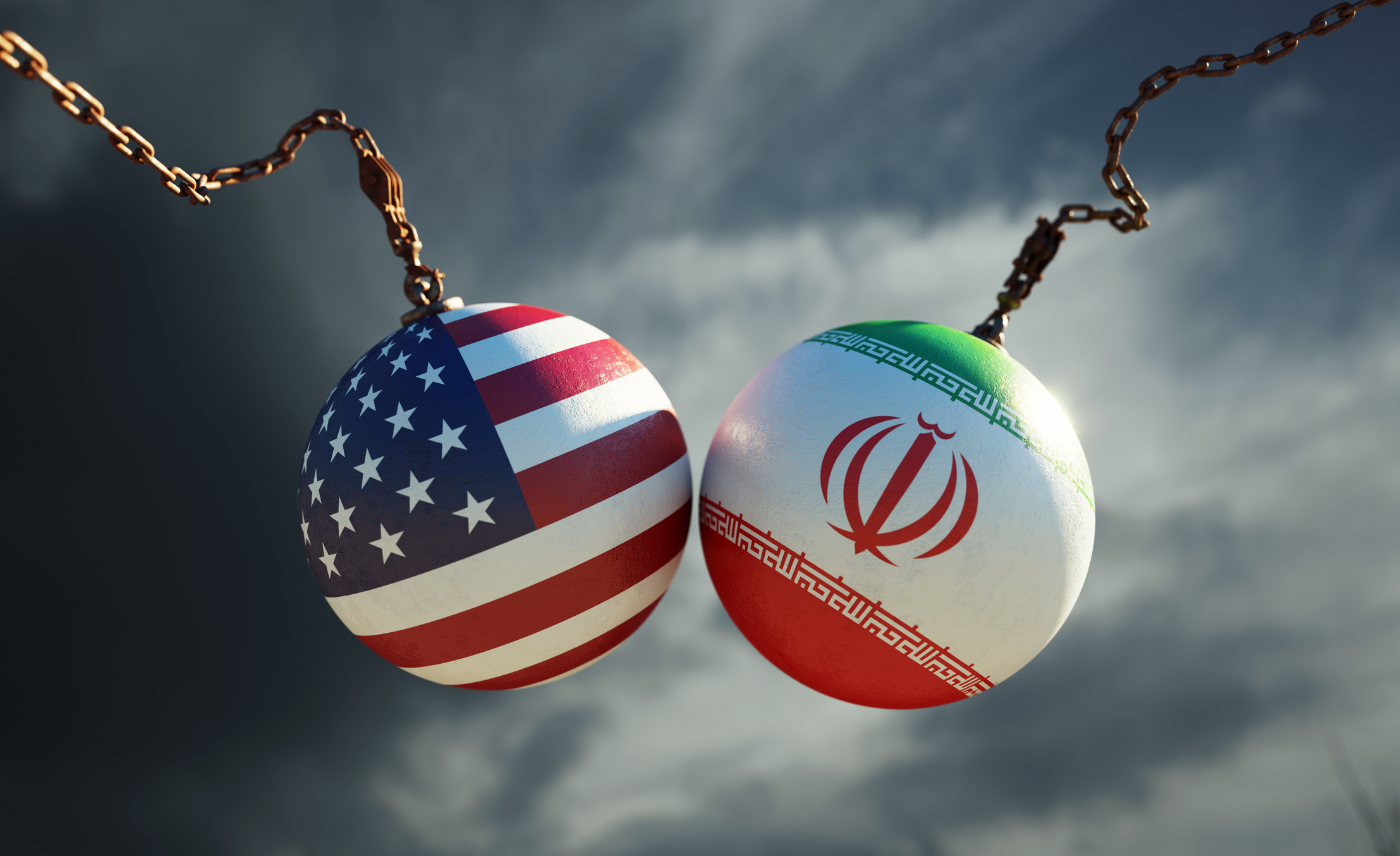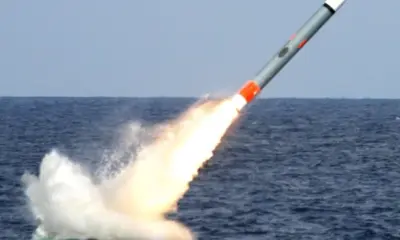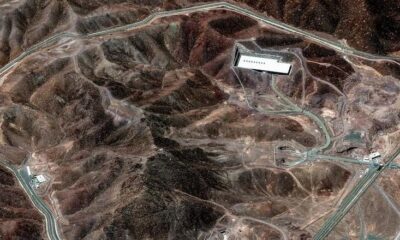Explainers
How Iran May Retaliate Following U.S. B-2 Bomber Strikes

The recent U.S. deployment of B-2 stealth bombers to strike Iran’s fortified nuclear sites represents a significant escalation in the ongoing Israel-Iran conflict. These precision strikes targeted critical facilities at Fordow, Natanz, and Isfahan, using bunker-buster bombs designed to penetrate deep underground infrastructure. The attacks have severely damaged Iran’s nuclear enrichment capabilities and marked the first direct U.S. military action inside Iran in decades.
Strategic Context and Impact of the Strikes
Israel’s sustained air campaign against Iran’s nuclear and missile infrastructure has already shifted the Middle East’s strategic balance, with Israel emerging as a dominant military power in the region1. The U.S. strikes using B-2 bombers have further intensified pressure on Tehran, degrading its nuclear program and eliminating senior commanders. This direct intervention signals Washington’s readiness to escalate beyond diplomatic and proxy engagements.
Iran’s leadership, including Supreme Leader Ayatollah Ali Khamenei, is reportedly in hiding amid fears of assassination, underscoring the gravity of the situation17. The strikes have also targeted Iran’s cyber capabilities, further disrupting regime control and internal security.
Likely Modes of Iranian Retaliation
1. Direct Missile and Drone Attacks on Israel and U.S. Forces
Iran is expected to intensify missile and drone strikes against Israeli cities such as Haifa and Beersheba, aiming to inflict casualties and damage critical infrastructure67. Given the involvement of U.S. forces and bases in the region, Tehran may also target American military installations in Iraq, Syria, Kuwait, Qatar, and the Gulf states5. These attacks would serve both as retaliation and a deterrent against further strikes.
2. Proxy Warfare Through the ‘Axis of Resistance’
Iran’s extensive network of proxy militias—including Hezbollah in Lebanon, militias in Iraq, Houthis in Yemen, and other groups—provides Tehran with asymmetric capabilities to strike U.S. and Israeli interests indirectly58. These proxies may launch rocket attacks, sabotage operations, or hostage-taking missions to pressure the U.S. and its allies without provoking full-scale war.
3. Cyber Attacks and Information Warfare
Following the targeting of Iran’s Cyber Police headquarters, Iran is likely to escalate cyber operations against U.S. military networks, financial systems, and critical infrastructure15. Cyber retaliation offers Iran a low-cost, deniable means to disrupt U.S. capabilities and signal resilience.
4. Disruption of Global Energy Supplies
Iran may threaten or attempt to close the Strait of Hormuz, a vital chokepoint for global oil shipments5. Attacks on commercial shipping or oil infrastructure in the Persian Gulf and Red Sea could raise global energy prices and exert international pressure on the U.S. and its allies.
5. Political and Diplomatic Maneuvers
Iran will likely seek to rally regional and international support by framing itself as a victim of aggression, while simultaneously refusing direct talks with the U.S. until Israeli strikes cease27. Tehran may leverage diplomatic channels to isolate Washington and gain concessions on its nuclear program while preparing for prolonged conflict.
Constraints and Risks for Iran
Despite its willingness to retaliate, Iran faces significant challenges:
-
Israeli and U.S. Air Defense: Israel’s Iron Dome and U.S. missile defense systems reduce the effectiveness of Iranian missile barrages36.
-
Risk of Broader Regional War: Tehran must avoid provoking Gulf states or NATO allies into direct conflict, which could overwhelm Iranian capabilities4.
-
Domestic Stability: Prolonged conflict and economic hardship risk internal dissent and weaken regime control1.
Conclusion
Iran’s retaliation after the U.S. B-2 bomber strikes will likely be multifaceted, combining missile and drone attacks, proxy warfare, cyber operations, and efforts to disrupt global energy routes. Tehran’s strategy will balance demonstrating strength and deterrence with avoiding full-scale war that could threaten regime survival. The United States and Israel remain on high alert, anticipating sustained Iranian responses while seeking to prevent escalation beyond the current conflict.
Summary Table: Iran’s Potential Retaliation Strategies
| Retaliation Method | Description | Targets | Challenges |
|---|---|---|---|
| Missile and Drone Attacks | Salvos against Israeli cities and U.S. bases | Israel, U.S. military sites | Air defenses, escalation risk |
| Proxy Militia Operations | Rocket attacks, sabotage, hostage-taking | U.S., Israel, Gulf allies | Proxy control, blowback |
| Cyber Warfare | Attacks on U.S. infrastructure and networks | U.S. military, financial systems | Attribution, retaliation |
| Energy Supply Disruption | Threats or attacks on Strait of Hormuz, shipping | Global oil routes | Global economic backlash |
| Diplomatic Efforts | Political isolation of U.S., refusal of talks | International community | Limited immediate impact |
The coming weeks will be critical in determining whether the conflict escalates further or if diplomatic efforts can be revived amid rising tensions.
Sources:
Washington Post1, Reuters2, IISS3, Al Jazeera4, Newsweek5, Testbook6, Vanguard7, CSIS8 (June 2025)
Explainers
Why the U.S. Needs Rare Earth Metals from China

WASHINGTON — As President Trump’s administration pushes tariffs on Chinese imports to an unprecedented 55%, one exception stands out in the escalating trade war: rare earth metals.
Even amid rising tensions, the U.S. continues to import rare earths from China—a quiet but critical dependency that most Americans don’t even know exists.
But in reality, rare earth metals are the invisible backbone of American industry, technology, and defense—and for now, the U.S. simply can’t afford to go without them.
What Are Rare Earths, and Why Do They Matter?
Rare earth elements (REEs) are a group of 17 metallic elements used in everything from consumer electronics to military weaponry. Despite their name, they’re relatively common—but hard to extract and even harder to refine.
They’re essential in:
-
Smartphones and laptops
-
Electric vehicle motors and batteries
-
Wind turbines and solar panels
-
F-35 fighter jets and missile guidance systems
-
Nuclear submarines and satellite communication systems
If a device needs power, precision, or speed, there’s a good chance it relies on rare earths.
China’s Dominance: The Strategic Choke Point
Although the U.S. has rare earth deposits, it lacks the industrial capacity to process them at scale.
📊 China processes over 80% of the world’s rare earth supply—and has done so for decades.
This gives Beijing extraordinary leverage. Even with trade friction intensifying, the U.S. is dependent on China’s refining capacity to keep its tech and defense sectors running.
The National Security Angle
Rare earths aren’t just an economic issue—they’re a national security imperative.
Without these metals, the U.S. would struggle to:
-
Produce advanced military equipment
-
Maintain its renewable energy transition
-
Compete in high-end electronics manufacturing
-
Defend supply chains in a crisis
In short: no rare earths, no modern military. No modern economy.
Can the U.S. Replace China? Not Yet.
While efforts to restart rare earth mining and processing in the U.S. have accelerated—including projects in California and Texas—experts say it could take 5 to 10 years to build a fully independent supply chain.
That’s why, despite aggressive tariffs and political rhetoric, the U.S. has carved out an exception in the trade deal for rare earths.
Because without them, key sectors of the American economy would come to a standstill.
The U.S.–China relationship is defined today by tension and competition.
But when it comes to rare earths, cooperation still exists beneath the surface—because it has to.
Until America develops its own full-spectrum rare earth processing industry, it will remain strategically dependent on its biggest rival.
And in global power politics, few resources are more quietly powerful than rare earths.
Explainers
What Went Wrong? Major Egg Recall Sparks Nationwide Salmonella Outbreak

A widespread Salmonella Enteritidis outbreak has prompted the recall of approximately 1.7 million dozen brown cage-free and certified organic eggs produced by August Egg Company of Hilmar, California. The recall affects multiple brands, including Clover, O Organics, Marketside, and Raley’s, distributed between February 3 and May 15, 2025, with sell-by dates ranging from March 4 to June 19, 2025. The affected eggs were sold in retail locations across California, Nevada, Arizona, Wyoming, New Mexico, Nebraska, Indiana, Illinois, and Washington.
As of June 6, 2025, the Centers for Disease Control and Prevention (CDC) reported 79 confirmed cases of Salmonella Enteritidis infections linked to the recalled eggs, with 21 individuals hospitalized. The illnesses began between February 24 and May 17, 2025. Investigations revealed that 90% of the interviewed patients consumed eggs or egg-containing dishes before becoming ill. Whole genome sequencing of bacterial samples from both patients and egg samples showed a genetic match, confirming the eggs as the source of the outbreak.
In response to the outbreak, August Egg Company has ceased the sale of fresh shell eggs and redirected all egg production to an egg-breaking facility for pasteurization to eliminate potential pathogens. The company is also conducting an internal review to enhance food safety measures and prevent future incidents.
Health officials advise consumers to check their egg cartons for plant codes P-6562 or CA5330 and Julian dates between 032 and 126. If the eggs match these identifiers, they should be discarded immediately or returned to the point of purchase for a full refund. Additionally, any surfaces or utensils that may have come into contact with the recalled eggs should be thoroughly cleaned and sanitized to prevent cross-contamination.
Salmonella infections can cause symptoms such as diarrhea, fever, and abdominal cramps, typically starting six hours to six days after exposure. While most individuals recover without treatment, the infection can be severe, especially for young children, older adults, and those with weakened immune systems. Anyone experiencing symptoms should seek medical attention promptly.
For more information and updates on the recall, visit the FDA and CDC websites.
Explainers
What Blunder Led to American Airlines Flight Diverting to Rome?

On June 2, 2025, American Airlines Flight AA780 from Philadelphia (PHL) to Naples (NAP) found itself in a major bind after a seemingly simple aircraft swap turned into a full-blown operational blunder. The flight, initially scheduled to be operated by a Boeing 787-8, was switched to a larger Boeing 787-9 for operational reasons. However, this swap led to a critical error, as the 787-9 wasn’t certified to land at Naples Airport, forcing the flight to divert mid-air to Rome.
The Aircraft Swap That Went Wrong
The aircraft took off from Philadelphia at 7:42 PM without any issues. However, as the flight was preparing to land in Naples, the crew realized that the 787-9 was not authorized to land at the airport. Despite clear weather conditions, the airport’s limitations—especially regarding runway size and taxiway capacity—made the 787-9 incompatible with the infrastructure at Naples Airport.
This led to an immediate decision by the crew to divert the flight to Rome’s Fiumicino Airport (FCO), located about 124 miles away from Naples.
Why the Swap Was a Problem
Although the 787-8 and 787-9 are both part of the same aircraft family, the 787-9 is longer and has a higher maximum takeoff weight, which can pose challenges at airports like Naples that have constrained infrastructure.
The swap, which seemed like a small operational adjustment, turned out to be a costly mistake due to these differences in aircraft performance characteristics. This issue underscores the need for airlines to thoroughly check whether an aircraft is compatible with its destination airport before making changes.
The Response and Logistical Challenge
After the diversion to Rome, American Airlines had to face the logistical nightmare of repositioning the aircraft and crew. Thankfully, the airline already operated a Rome–Chicago route using a 787-8, which allowed them to swap the aircraft. The diverted 787-9 was reassigned to this route, and a 787-8 was sent back to continue the journey to Naples.
However, due to crew duty hour restrictions, the flight couldn’t continue immediately. The 787-8 and its crew overnighted in Rome, completing the remaining 38-minute flight to Naples the following day, on June 4.
The Aftermath: Were Passengers Affected?
While the flight to Naples was completed the following day, it remains unclear how the affected passengers were handled. They were likely either flown from Rome to Naples the next day or re-accommodated via alternative methods like trains or other flights.
What Went Wrong: A Lesson in Aircraft Compatibility
This incident highlights the complexities of international flight operations and the importance of verifying aircraft compatibility with destination airports. A simple aircraft swap led to a serious operational oversight, and American Airlines’ quick response minimized disruptions. However, the event raises questions about the airline’s internal communication and whether more thorough checks could have prevented the issue.
In the fast-paced world of international aviation, small mistakes can lead to big consequences, as seen in this case.
-

 Explainers2 months ago
Explainers2 months agoWhat Blunder Led to American Airlines Flight Diverting to Rome?
-

 Trending Now2 months ago
Trending Now2 months agoBillie Elish and her boy friend Nat Wolf Balcony Kiss – pictures go viral
-

 Global2 months ago
Global2 months agoColombian Presidential Candidate Miguel Uribe Turbay Shot at Rally in Bogotá
-

 Explainers2 months ago
Explainers2 months agoWhy the U.S. Needs Rare Earth Metals from China
-

 Explainers2 months ago
Explainers2 months agoWhat Went Wrong? Major Egg Recall Sparks Nationwide Salmonella Outbreak
-

 Trending Now2 months ago
Trending Now2 months agoReporter Shot by Rubber Bullet on Live TV During Immigration Protests in L.A.
-

 Money & Tools2 months ago
Money & Tools2 months agoLVMH: A Golden Opportunity Amidst Market Corrections
-

 Global2 months ago
Global2 months agoTrump Finalizes China Trade Deal, Tariffs Soar to 55%












